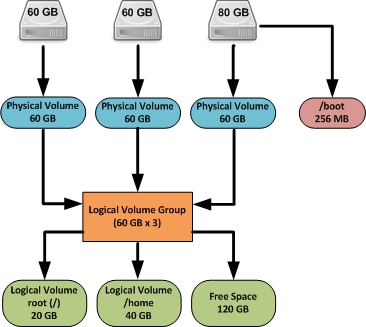A customer is currently preparing the Linux (Ubuntu) servers that are going to be used to deploy Cassandra and Elastic databases.
He wants to know the recommended way to partition the hard disk on each server. Should all the space go into the '/' file system, or some of it should be assigned to separate 'data' partition, etc?
Please elaborate for each Cassandra and Elastic cases.
Thanks.
Alberto, we are recommending all our customers to use latest Ubuntu Server LTS.
Miguel
A partition question exists in any Linux server setup, irrespective of DataMiner software. The need for partitioning depends on the objective of the solution and storage needs.
A separate file system for /data provides a mechanism to replicate and clone data and also provides redundancy if that partition is set up on a different disk entirely. Linux also supports LVM, i.e. Logical Volume Managers, which gives the flexibility to increase or reduce the file system sizes.
Please see an example of a setup from the web. 
I suggest using the following links to understand the need to create these partitions and also how to make these.
https://www.redhat.com/sysadmin/lvm-vs-partitioning
Regarding Elasticsearch and Cassandra, the configuration needs to be updated to point to the correct path.
Elasticsearch has path.data setting, please see details at path.data and path.logs | Elasticsearch Guide [6.8] | Elastic .
Cassandra configuration has data_files_directories property to set the data path, please see details at Installing Cassandra on a Linux machine | DataMiner Docs and Cassandra configuration.
The capacity and storage planning of Elasticsearch and Cassandra is a much broader topic, and please review the following.
Benchmarking and sizing your Elasticsearch cluster for logs and metrics | Elastic Blog
Hope it helps.
Thanks.
Subscribing to get more insights – Which UBUNTU release will be used?